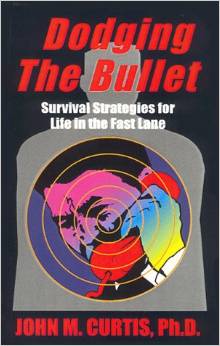Showing that he’s willing to act swiftly to keep the U.S. economy rolling, 66-year-old Federal Reserve Board Chairman Jerome Powell said while the economy’s doing OK now he’s concerned about potential pitfalls down the road. Powell expressed no regret over raising the federal funds rate four times in 2018, then July 31 cutting the rate 25 basis points to help stimulate the economy. Whether admitted to or not, the biggest threat to the U.S. economy is a bear stock market, where short-sellers dominate the landscape driving market averages down. How long that process lasts is anyone’s guess. But if market timers—including the nation’s biggest funds—believe that the economy’s heading toward recession, the sell-off could continue for a while, driving commodity prices, like gold, up. Powell looks ready-and-willing to continue slashing the federal funds rate.
Whatever factors weigh against economic growth, none is greater than a bear stock market, where there’s more selling than buying. Powell knows when the Fed slashes rates, it usually spurs the stock market to shift from short-selling to long-term buying, something his Federal Open Market Committee [FOMC] is likely to do when it meets Sept. 17. Powell could act sooner but doing so could trigger panic selling, driving market indexes down further. Watching this week’s yoyo session, leaving the Dow Jones Industrials down 623 points today, shows that Wall Street doesn’t see a short-term bottom reached yet. Powell cites the slowdown in China and Europe, and uncertainties connected with the China trade war and geopolitical events like Hong Kong and the Oct. 31 Brexit deadline. All those events pale in comparison to the sell-off going on Wall Street.
Criticized by 73-year-old President Donald Trump for raising rates four times in 2018, Powell must continue to slash rates to get Wall Street back on track. Before that happens, Wall Street must discount current share prices, continuing to reach a sustainable bottom. Speaking in Jackson Hole, Wyoming at the Fed’s annual summer retreat, Powell said the Fed must do whatever’s needed to ‘sustain the expansion,” watching the economy shrink approaching the third quarter. “The Three weeks since our July FOMC meeting have been eventful, beginning with the announcement of new tariffs on imports from China,” Powell said. Trump has discounted the effect of tariffs on the U.S. and world economy, pointing fingers at Powell’s 2018 rate hikes. Instead of pointing fingers, the Fed must look to what can be done to reverse the current economic slowdown to avoid recession.
Powell said the U.S .economy continues to “perform well overall,” despite external factors weighing on markets. With July and August historically sell-off time for Wall Street, it’s not uncommon for short-sellers to step in before Labor Day. When price-to-earning-ratios get out-of-hand, it usually triggers a sell-off to make share prices more attractive to value investors. When Powell talks of equity markets getting “volatile,” he’s not ruling out cyclical profit-taking, something that happens when share prices get too expensive. Powell knows that the Fed’s monetary policy can only go so far to help Wall Street. “Based on our assessment of the implications of these developments, we will act as appropriate to sustain the expansion, with a strong labor market and inflation near its symmetric 2 percent objective,” Powell said, hinting a more rate cuts when the FOMC meets in September.
Calling financial markets “complex and turbulent,” Powell looks ready to do his part in stabilizing the U.S. economy. His comments send Trump a message that the China trade war has not helped the U.S. or global economy, hoping that he can resolve the dispute sometime soon. So far, Trump, and his key economic advisers Larry Kudlow and Peter Navarro, have shown no signs to giving in. Powell commented that there are “no recent precedents” when it comes with the Fed dealing with tariffs, or, for that matter, geopolitical issues like Hong Kong and Brexit. Actually there have been many geopolitical issues impacting the U.S. economy over the years, including recent wars in Afghanistan and Iraq. “We can, however, try to look through what may be passing events, focus on how trade developments are affecting the outlook, and adjust policy to promote our objectives,” Powell said.
Steeped in Fed history, Powell admitted that from 1950 to 1982, the Fed was constantly challenged with inflationary pressures. Once the economic collapse happened in 2008, the Fed has dealt with deflationary pressures, where consumer spending could not galvanize inflation. Powell talked about the Fed’s “stop and go” policy dealing with inflation, something he applied in 2018 when he raised rates one percent. Admitting that it’s “unlikely” the Fed deals with inflationary pressure, he knows that rate cuts can help reduce deflationary pressures. Concerned about negative rates in Japan in Europe, Powell thinks he can navigate his way through a period of unprecedented low interest rates. Some economists like Alliance SE Mohamed El-Erian worry about U.S. rates going negative like Europe and Japan. But unlike Europe and Asia, Wall Street could drive rates up with a sustained market rally.



